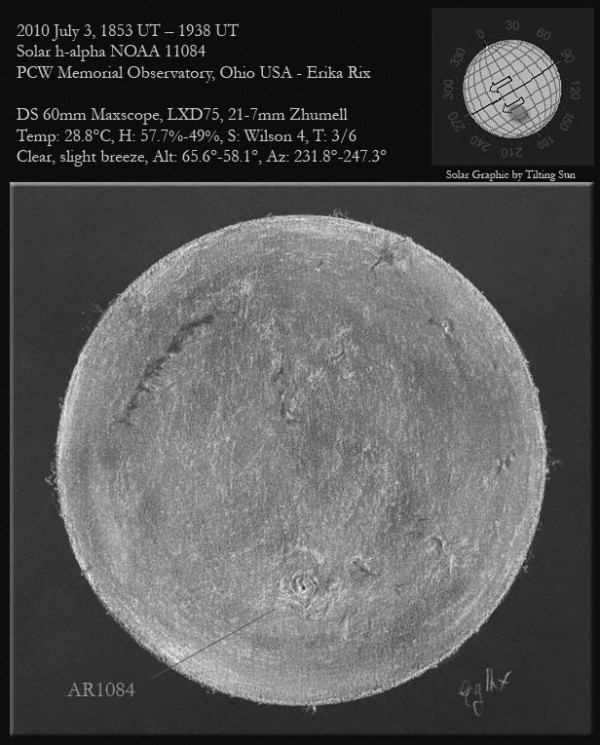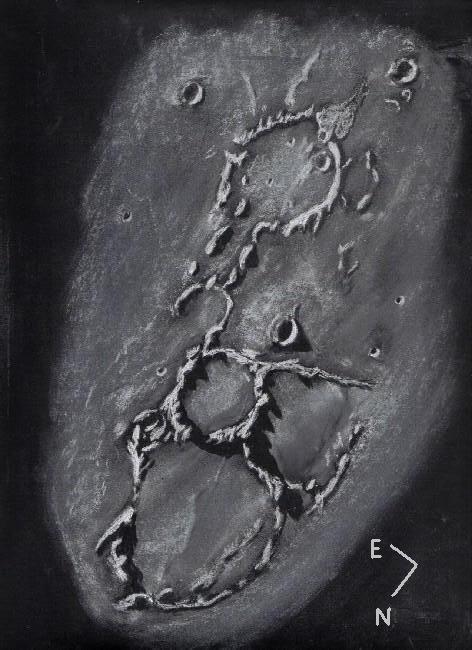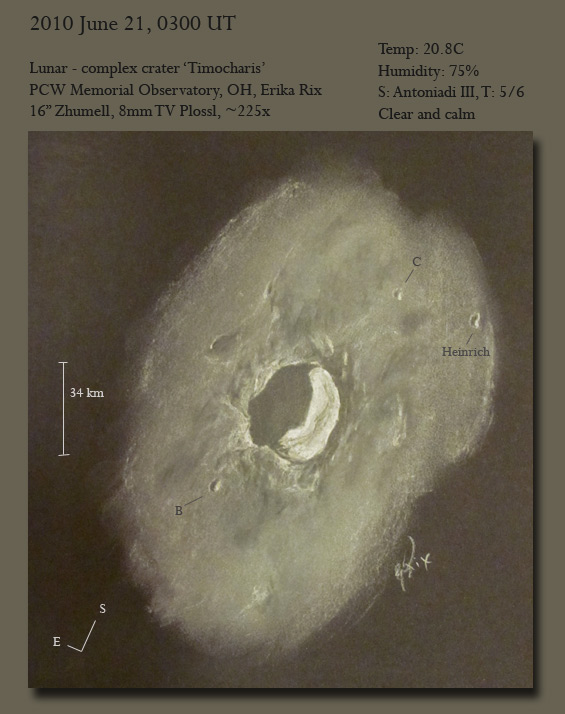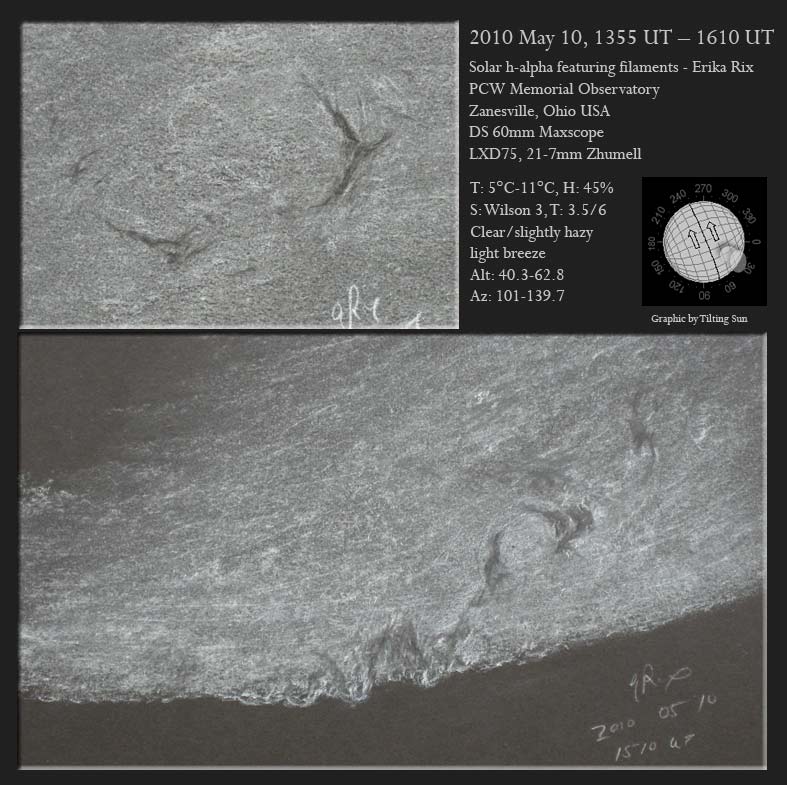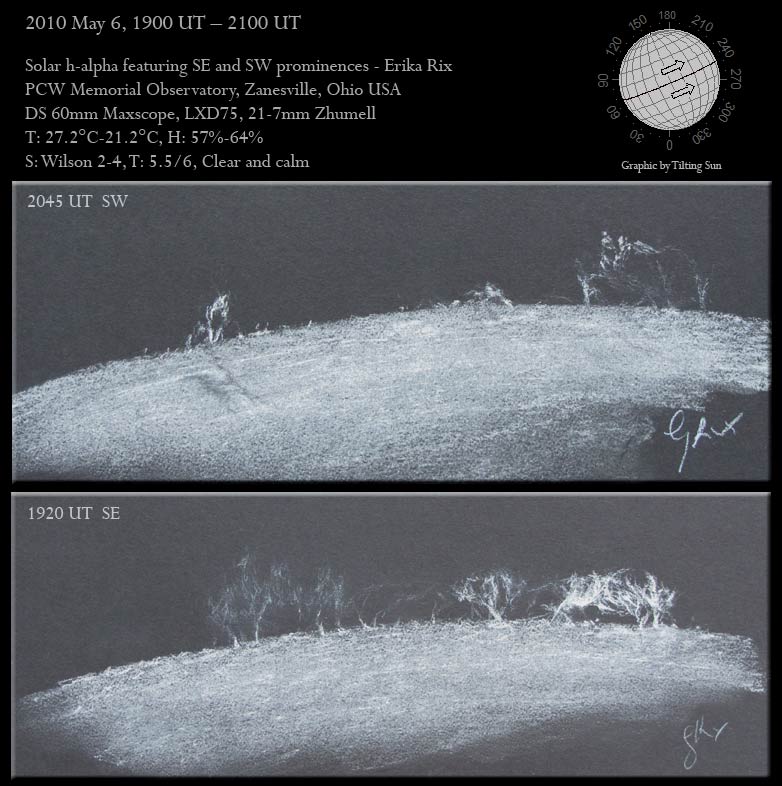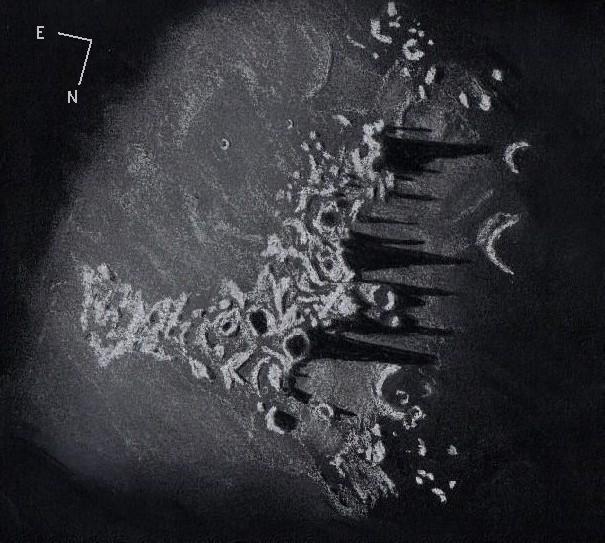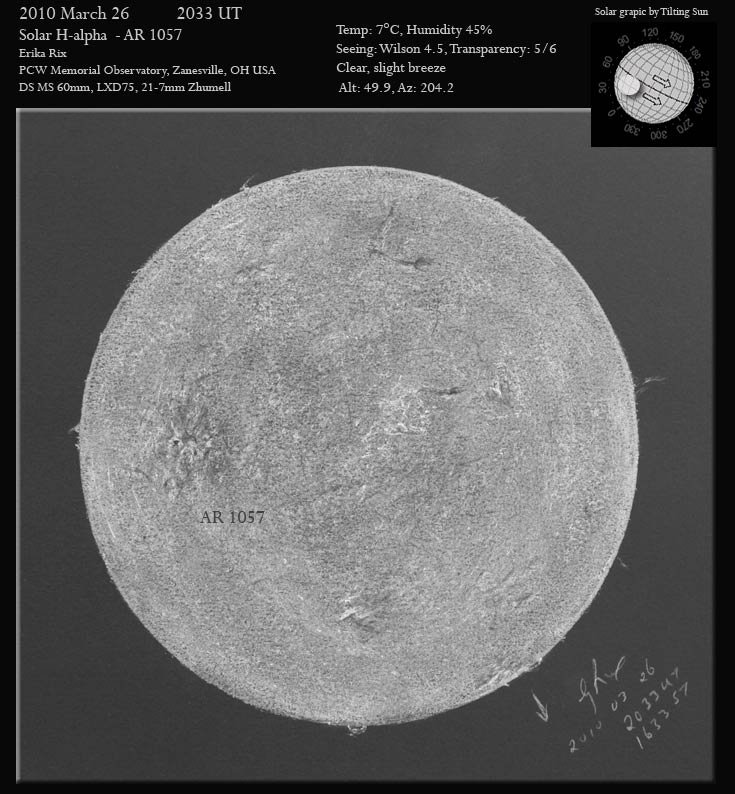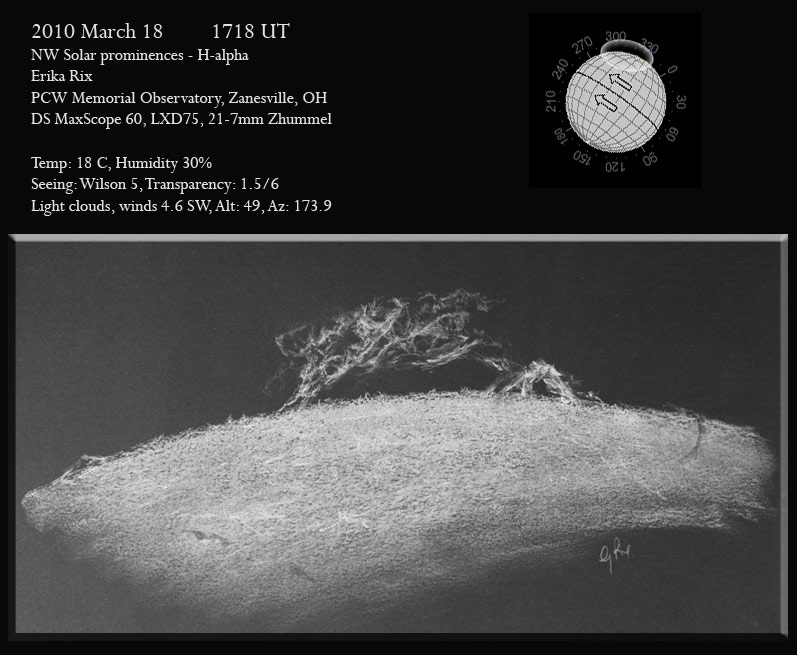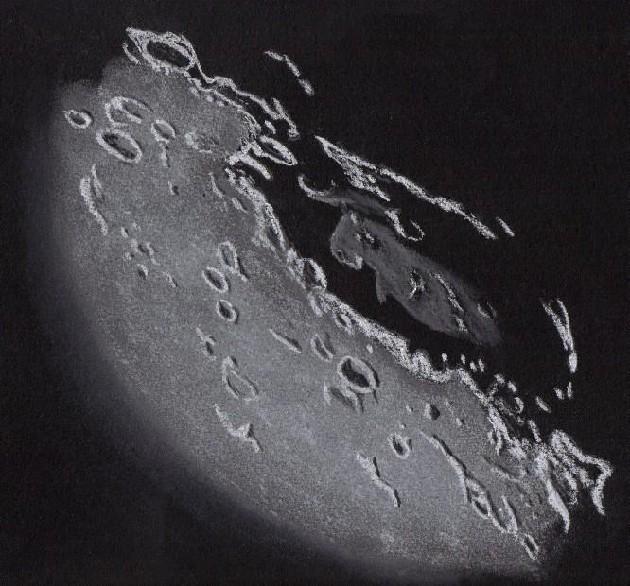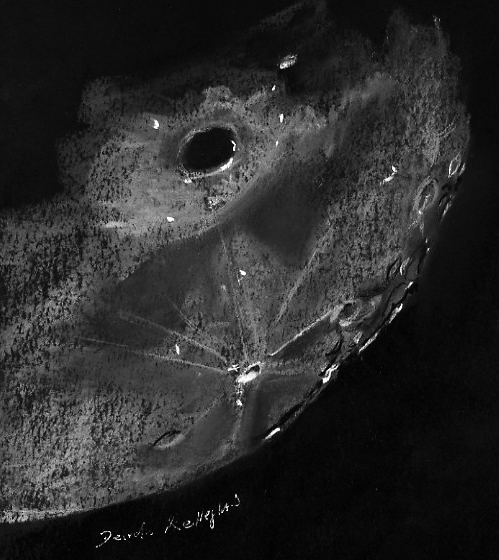2010 July 3, 1853 UT – 1938 UT
Solar h-alpha NOAA 11084
PCW Memorial Observatory, Zanesville, Ohio USA – Erika Rix
DS 60mm Maxscope, LXD75, 21-7mm Zhumell
Temp: 28.8°C, Humidity 57.7%-49%
Seeing: Wilson 4, Transparency: 3/6
Clear, slight breeze, Alt: 65.6°-58.1°, Az: 231.8°-247.3°
H-alpha sketch created scopeside with black Strathmore Artagain paper,
white Conte’ crayon and pencil, black oil pencil, Prang white watercolor
pencil
It appears that I missed seeing a dual pair of CMEs (coronal mass
ejections) on the Sun today. It took at place at 1154 UT. My session
began at 1853 UT. Fantastic footage of it can be seen here by SOHO
coronagraph.
http://www.spaceweather.com/swpod2010/03jul10/cme_c2_big.gif?PHPSESSID=kljak6da6ng8ifu6v1gf6p7ch3
AR 1084 still looks like a spiral galaxy (or a chicken eye with the wide
yellow/pink skin wrinkled around the pupil). A fantastic
filament/prominence reached over the limb in the SW. The filament was
thick and fibrous reaching out to the west and on either end, long and
slender.
Riser, my regular solar buddy, aka 14-year old Rhodesian Ridgeback, took
a pretty hard fall today and had to watch me observe from a distance in
the comfort of the shade at the top of the hill. He’s resting
comfortably now on a very thick duvet. Poor ol’ boy.
Best regards,
Erika Rix
pcwobservatory.com
